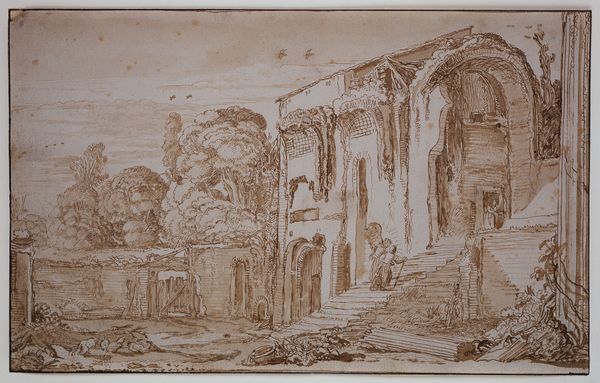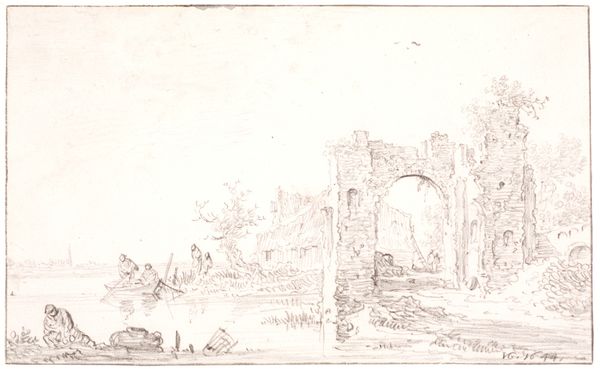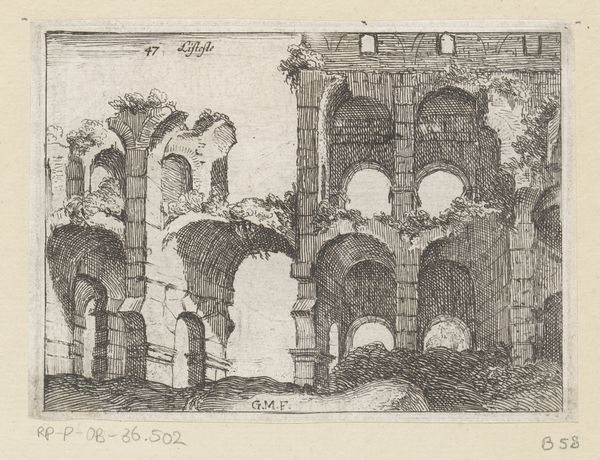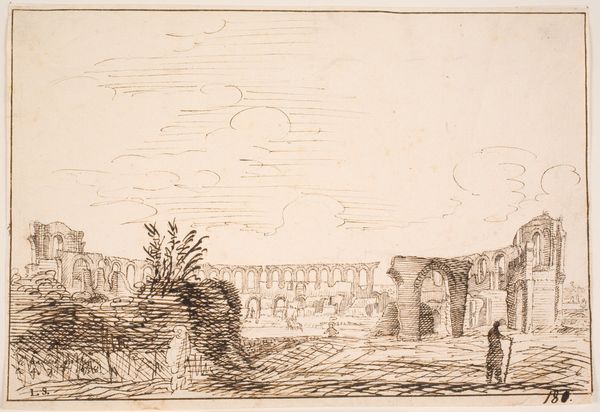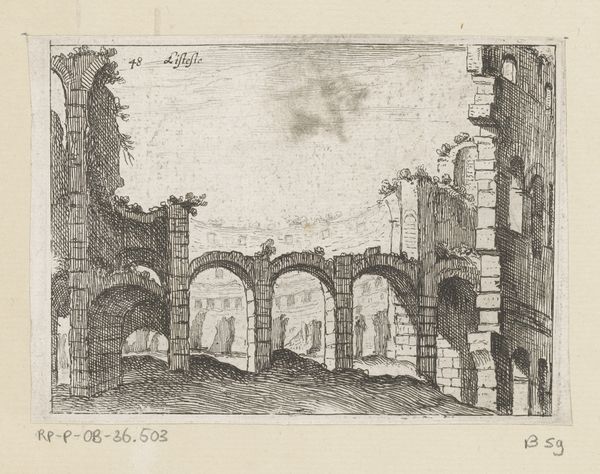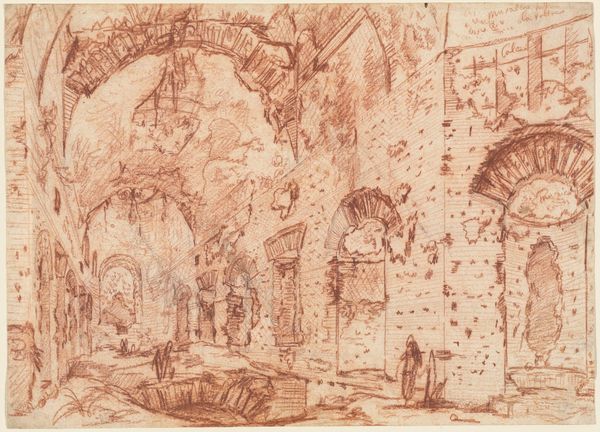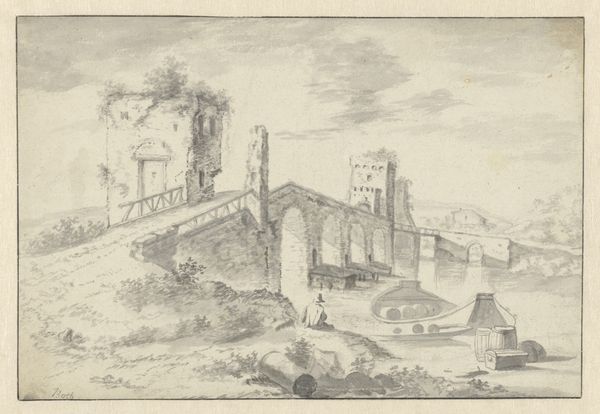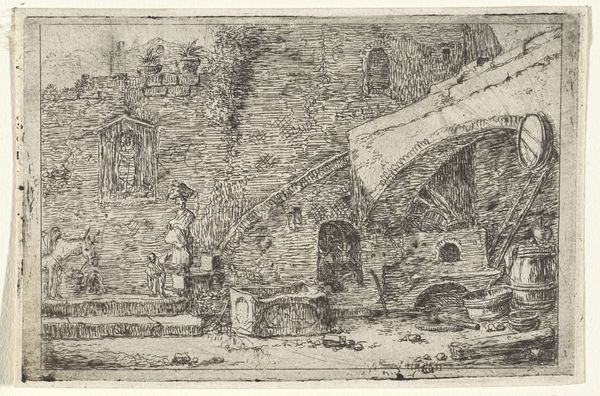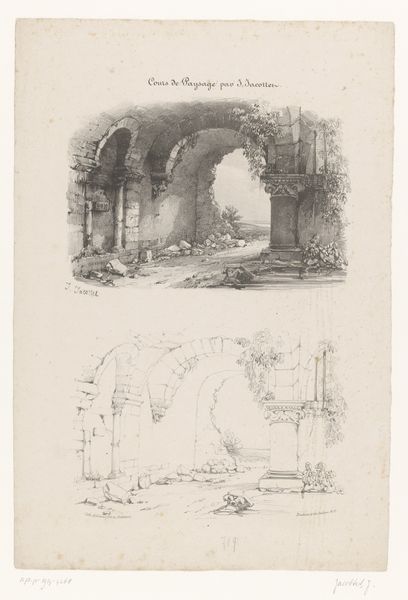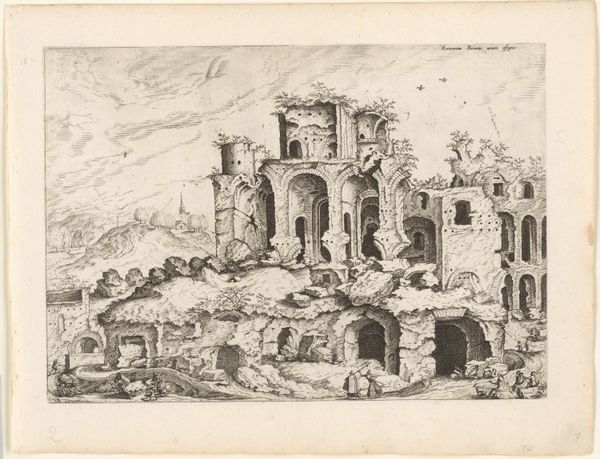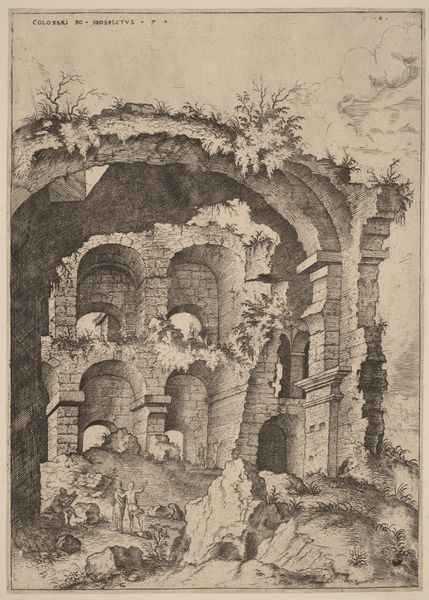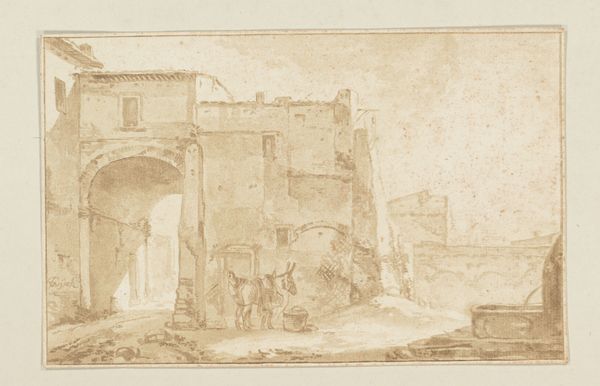
drawing, etching, ink
#
drawing
#
ink drawing
#
etching
#
landscape
#
etching
#
ink
#
history-painting
Dimensions: 154 mm (height) x 233 mm (width) (bladmaal)
Editor: So, this is "Le palais galien, Bourdeaux," made in 1638. It's an ink and etching drawing currently residing at the Statens Museum for Kunst. It's quite fragile in its depiction, a ghostly ruin almost. I’m curious – what stands out to you when you look at it? Curator: What strikes me is the process of image-making itself. The use of etching and ink allowed for the wide dissemination of these ruinscapes, feeding a growing interest in the material remains of the past and even transforming this into an early form of cultural tourism and consumption. Editor: Consumption? In what sense? Curator: Think about it: these prints weren’t just artistic renderings. They were commodities, souvenirs of a cultural experience. People were literally buying and possessing images of these ruins. This links directly to the power dynamics of the time. Who had the means to travel, acquire, and display these images? Editor: That’s a fascinating point. I hadn't considered the act of acquiring art as a form of possessing the depicted history or scene itself, almost like trophy hunting with ink. Do you think the medium itself—etching and ink—plays a role in this interpretation? Curator: Absolutely. The relative ease and reproducibility of etching, compared to painting, democratized access to these images. But, the creation of such pieces wasn't separated from a social context. The materials—the ink, the paper—were produced, distributed, and sold through a complex network of labor. Think about the craftspeople involved in their production. It wasn't just the artist; it was the paper maker, the ink merchant. Their contribution, often overlooked, is just as vital to the final work. Editor: So, looking beyond the artist's hand, we see a whole web of labor and economic forces shaping our engagement with art, interesting! Curator: Exactly. It challenges this romanticized vision of the solitary artist creating in a vacuum, placing the artwork within a much larger material and social system. Editor: That’s given me a completely different way to approach not only this work but art in general. Thank you!
Comments
No comments
Be the first to comment and join the conversation on the ultimate creative platform.
